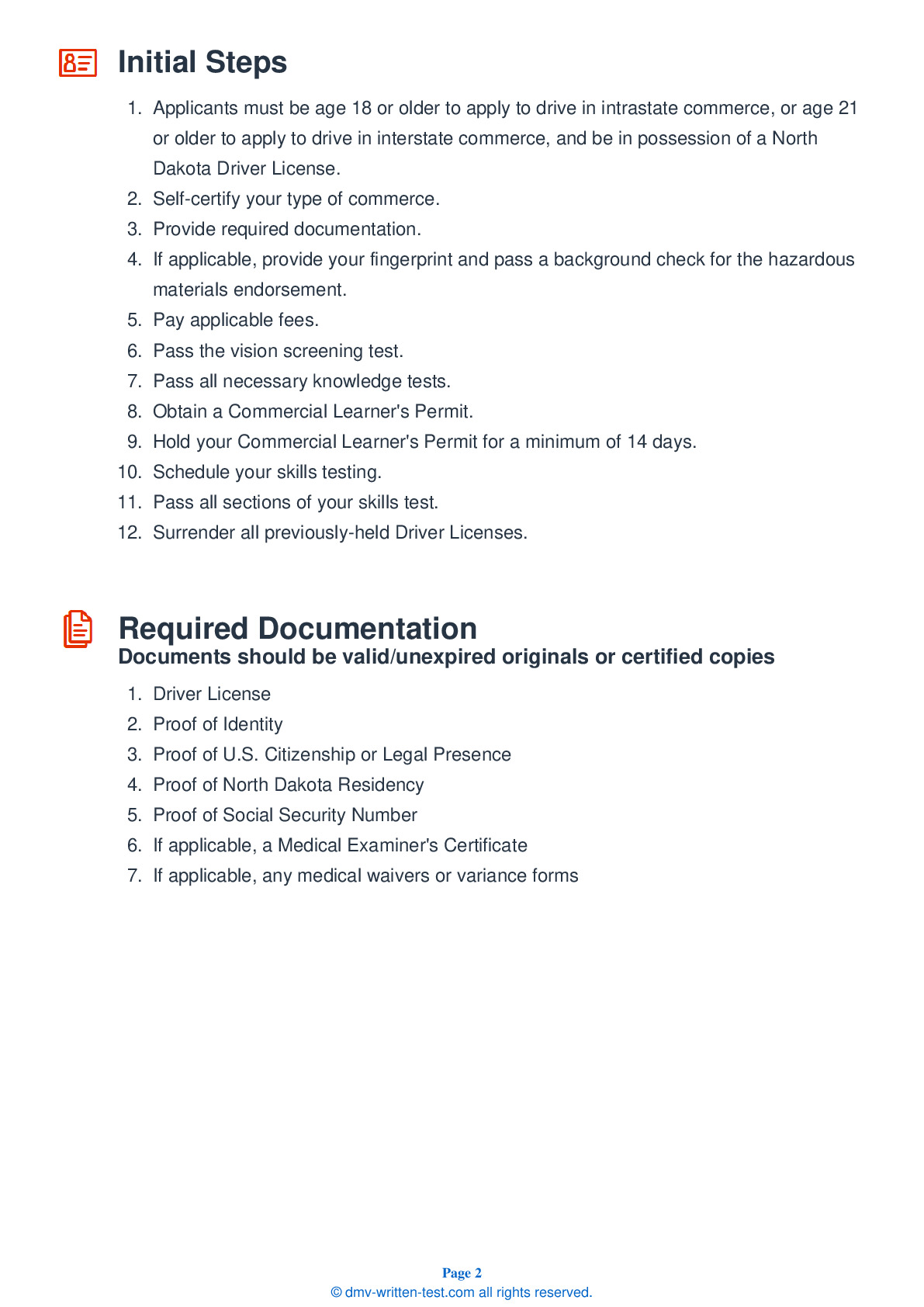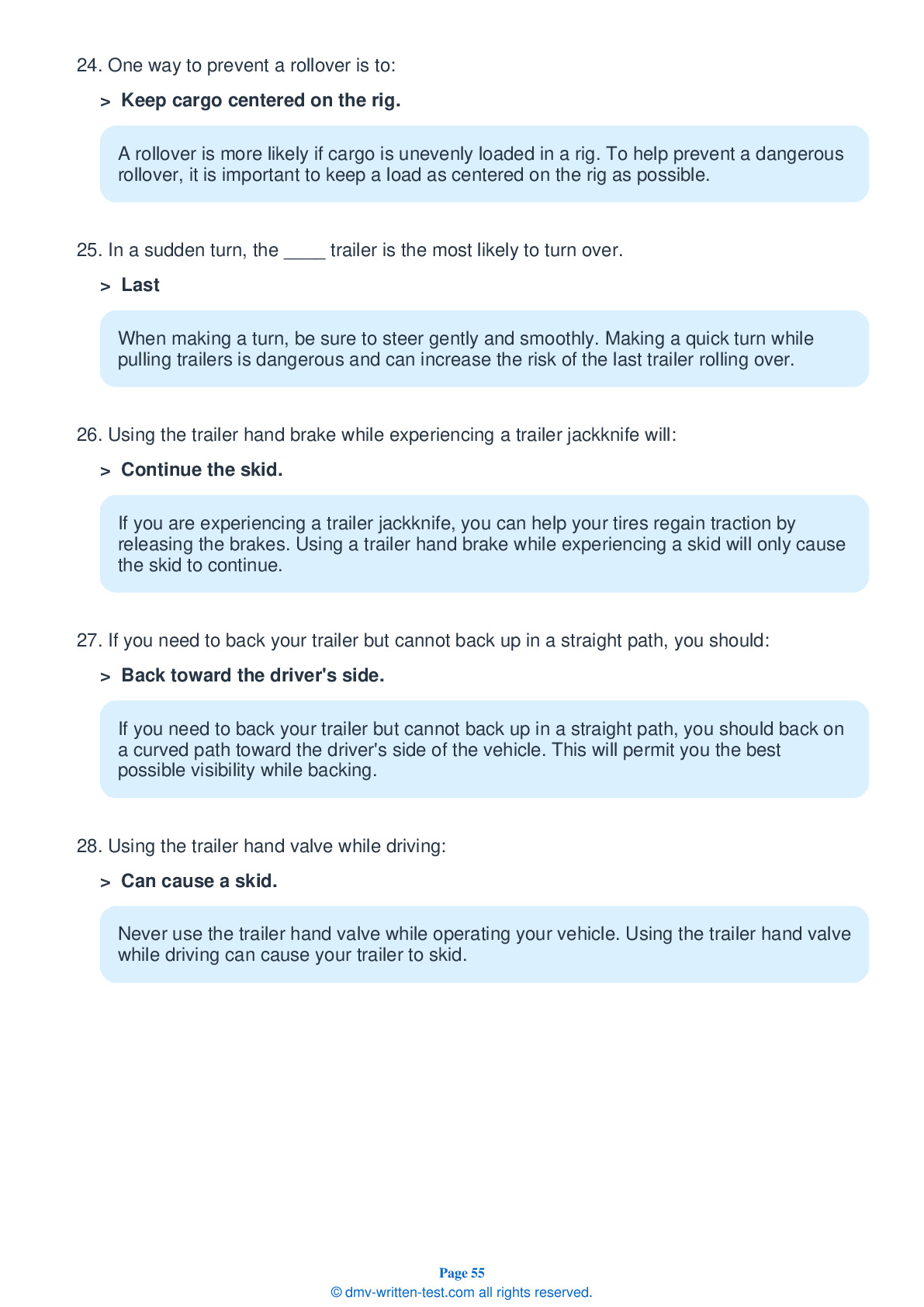Combination
All applicants who are applying for a Class A CDL should be prepared to take the Combination test. This test covers information found in Section 6 of the Commercial Drivers License Manual. Section 6 provides the information needed to safely operate tractor-trailers, doubles, triples, and straight trucks with trailers. The test is made up of 20 multiple-choice questions, and applicants will need to correctly answer a minimum of 16 questions to pass. The Combination test is not a replacement for the Double/Triple endorsement test.
Number of Question
Passing Score
1. If a trailer begins to jackknife, you should not:
Explanation
If a trailer begins to jackknife, you should release the brakes and allow the trailer wheels to regain traction with the road. Do not apply the trailer hand brake to attempt to straighten out the rig because it will only prolong the skid. The application of brakes is what caused the wheels to lock in the first place.
2. Starting in which year were newly manufactured trailers required to have ABS?
Explanation
All trailers and converter dollies manufactured on or after March 1, 1998 must be equipped with Anti-Lock Braking Systems (ABS).
3. A lightly-loaded combination vehicle will stop more slowly than a fully-loaded vehicle because:
Explanation
An empty combination vehicle will come to a complete stop more slowly than a fully-loaded vehicle. The stiff suspension springs and strong brakes will have lower traction on a light trailer than they would if the vehicle carried more weight.
4. When driving a bobtail tractor, you should be aware that:
Explanation
Bobtail tractors are tractors that are not attached to any semitrailers. When operating a bobtail, you should be aware that stopping can be difficult and that it will take a longer distance to bring the bobtail to a complete stop than it would a tractor attached to a loaded semitrailer.
5. Rollovers happen when drivers:
Explanation
A rollover happens as a result of a driver taking a turn at too high a speed. Be sure to take turns and curves safely and slowly.
6. In a double or triple combination:
Explanation
When positioning trailers in a combination, the most heavily-loaded trailer should be the closest to the tractor. The lightest trailer should be positioned in the rear.
7. When lightly loaded, combination vehicles:
Explanation




